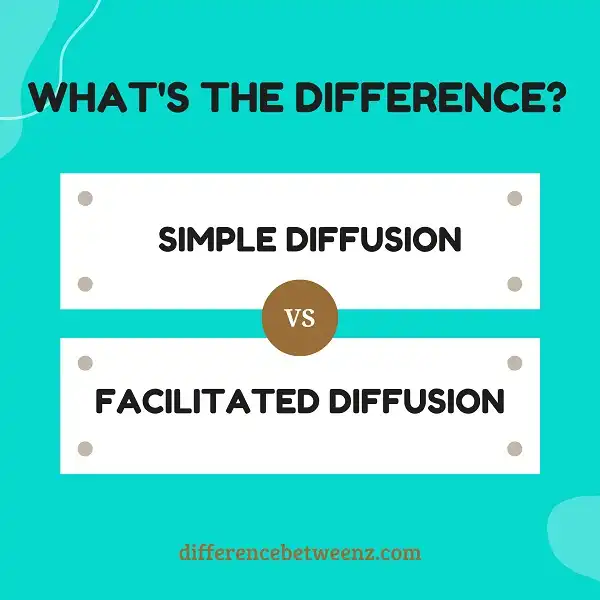Diffusion is the process of molecules spreading out from a high concentration to a low concentration. There are two types of diffusion: simple and facilitated. In this blog post, we will discuss the difference between these two types of diffusion. Simple diffusion occurs when there are no obstacles in the way of the molecule spreading. However, facilitated diffusion occurs when a carrier protein assists in transporting the molecule across the cell membrane. Let’s take a closer look at these two types of diffusion!
What is Simple Diffusion?
Simple diffusion is the movement of molecules from an area of high concentration to an area of low concentration. This type of diffusion does not require energy, as the molecules are able to move down the concentration gradient on their own. Simple diffusion is a key process in many biological systems, as it allows cells to take in nutrients and get rid of waste products. Simple diffusion is also responsible for the movement of gases in and out of cells, as well as the passage of water across cell membranes. In general, any time that molecules move from an area of high concentration to an area of low concentration, simple diffusion is taking place. As a result, this process plays a vital role in the functioning of all living things.
What is Facilitated Diffusion?
Facilitated diffusion is a type of passive transport that helps move molecules across cell membranes. This process uses proteins to transport molecules down their concentration gradient from an area of high concentration to low concentration. Facilitated diffusion is a key component of many cellular processes, including nutrient uptake, waste removal, and signal transduction. While facilitated diffusion does not require energy from the cell, it is still a highly-regulated process. Proteins involved in facilitated diffusion can be found in all cell types, and each protein has a specific substrate that it can transport. As a result, facilitated diffusion is a highly efficient way for cells to move molecules across membranes.
Difference between Simple Diffusion and Facilitated Diffusion
Simple diffusion is the movement of molecules from an area of high concentration to an area of low concentration. This type of diffusion does not require energy, as the molecules are able to move freely across the cell membrane. Facilitated diffusion, on the other hand, involves the transport of molecules across the cell membrane with the help of proteins. This process also requires no energy, as the proteins act as channels that allow the molecules to move down their concentration gradient. While both processes are necessary for cells to function properly, facilitated diffusion is generally more efficient, as it can transport larger molecules and overcome barriers that would impede simple diffusion.
Conclusion
In order to understand the difference between simple diffusion and facilitated diffusion, it is important to first understand what each process entails. Simple diffusion occurs when a molecule moves from an area of high concentration to an area of low concentration by random collision with other molecules. Facilitated diffusion, on the other hand, involves a protein called a transporter that mediates the transport of molecules across the cell membrane. The transporter binds to a molecule on one side of the membrane and releases it on the other side.


